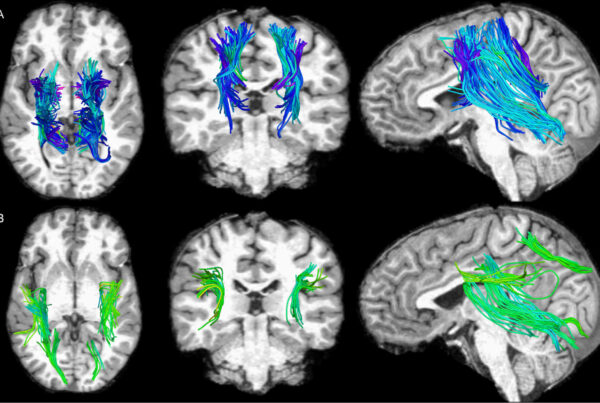In a quest to determine how a gene associated with increased Alzheimer’s risk is surviving natural selection, a group of researchers from multiple universities including USC have discovered that the APOE-ε4 allele is associated with increased fertility in women.
Previous research revealed that the Apolipoprotein-ε4 (APOE-ε4) allele increases the risk for a variety of diseases in aging populations, specifically Alzheimer’s and cardiovascular disease. And yet, despite its negative effects, this allele remains prevalent in approximately 20% of the human population.
In the new paper, the authors worked alongside the Tsimane (Chi-mahn-eh) community in Bolivia, a forager-horticultural society, to look at the effects of the allele through an evolutionary, anthropological lens. To do so, lead author Benjamin Trumble, an associate professor of evolutionary anthropology at Arizona State University, headed to the Bolivian Amazon lowlands where the Tsimane live.
The Tsimane Health and Life History Project (co-directed by Trumble, Hillard Kaplan of Chapman University, Michael Gurven of UC Santa Barbara, and Jonathan Stieglitz of the Institute for Advanced Study in Toulouse, France) has a longstanding relationship with the Tsimane to collect demographic and biomedical data and help provide medical care — a relationship that has been in effect for over 20 years. With over 17,000 people living across 90 villages, their hunter-farmer lifestyle is more similar to human life prior to the Industrial Revolution than modern cities, offering a unique glimpse into health and aging without modern-day influences.
Several researchers at USC have been involved with the Tsimane Health and Life History Project (THLHP), including University Professor and ARCO/William F. Kieschnick Chair in the Neurobiology of Aging Caleb Finch, a corresponding author of the new study. Finch has researched APOE alleles and their associations with health risks for more than 30 years; in a 2017 study, he and his colleagues discovered that APOE-ε4 was associated with higher fertility in women exposed to high pathogen levels in rural Ghana.
“APOE-ε4 was first recognized in the 1980s for its association with high blood cholesterol and more heart attacks,” Finch said. “That set many of us to thinking that maybe there was a reproductive advantage to having high lipids during pregnancy.”
For this particular study, the researchers collected data from 795 Tsimane women, ranging in age from 13 to 90 years old. The team of researchers not only retrieved genetic data to determine which alleles are present for each individual, but also information about their fertility, including age of first birth, how long between births and total number of live births.
When looking at the data, the researchers found that Tsimane women with the presence of one APOE-ε4 allele had an increase of 0.5 births, compared with those without the APOE-ε4 allele. The number of live births increased even more when there was the presence of two copies of the APOE-ε4 allele. These women had an average increase of two live births compared with those without this specific allele.
“What we found in this population was that women began reproducing almost a year earlier if they had the APOE-ε4 allele, and they had shorter interbirth intervals. Those two things combined allow them to have about half an additional kid if they have one copy or two additional kids if they have two copies,” Trumble explained.
This advantageous effect on fertility could help to explain how an allele that has such a negative impact in one’s later life through the increased chances of developing Alzheimer’s or cardiovascular disease has not been weeded out by natural selection — the advantages take place in one’s early to mid-life years, and therefore are passed along to their offspring.
“Genes that are associated with diseases that occur after the age of reproduction, or after reproduction has already started, are in ‘selection’s shadow.’ There have been a lot of arguments about the APOE-ε4 allele — that it may be an example of selection’s shadow, that you don’t develop Alzheimer’s until after you’ve already had all your kids,” Trumble said.
Other smaller studies have shown other advantageous aspects of the APOE-ε4 allele, including that children in Brazil are able to handle environmental pathogens and parasites, such as Giardia, better than those without the allele, which resulted in better cognitive functions and higher growth rates.
Even with these benefits of the APOE-ε4 allele that have been discovered, there is still the major deleterious effect of the increased risk of Alzheimer’s and cardiovascular disease in the later stages of life. Interestingly, this negative effect of the allele is mostly seen in Westernized nations. The Tsimane, for instance, have the lowest rates of dementia and Alzheimer’s in the world, despite having the same 20% prevalence of the APOE-ε4 allele in their population.
What can this mean for understanding and treating the negative effects of the allele in areas affected the most?
“We need to better understand global variation, and in particular, we need to kind of think outside the box and move beyond our focus on ‘this allele causes X disease’ and that’s just how it is,” Trumble said. “Instead, we need to take a step back and say, ‘What about in different environments? What about in the environments in which humans evolved?’ Because that actually opens up a whole other possibility for prevention or treatment by being able to mimic some of the aspects of that lifestyle. If we aren’t seeing the same associations between APOE-ε4 and some outcome, then maybe (we need to) kind of take a step back and say, ‘OK, what are the differences?’”
Further research into the APOE alleles will also include the study of their “gene neighbors,” separated genes that modify the activity of the different alleles, which may shed more light on how APOE-ε4 improves fertility, Finch said.
“This is a deep, robust study that shows APOE-ε4 has a major set of benefits to reproduction,” Finch said. “The next phase of the work with the Tsimane is to look at these other genes to see how they interact or modify the effects of APOE-ε3 and APOE-ε4.”
“Apolipoprotein-ε4 is associated with higher fecundity in a natural fertility population” was released August 9, 2023 in Science Advances. In addition to Trumble, Gurven, Finch, Kaplan, and Stieglitz, coauthors included Mia Charifson of New York University; Tom Kraft of the University of Utah; Angela R. Garcia, Stephanie V. Koebele, and Kenneth Buetow of Arizona State University; Daniel K. Cummings and Paul Hooper of Chapman University; Amanda J. Lea of the Canadian Institute for Advanced Research; Daniel Eid Rodriguez of the Universidad de San Simon, Bolivia; Bret Beheim and Riana Minocher of the Max Planck Institute for Evolutionary Anthropology, Germany; Maguin Gutierrez of the Tsimane Gran Consejo, Bolivia; Gregory S. Thomas of UC Irvine; and Margaret Gatz of USC.
The Tsimane Health and Life History Project is a large interdisciplinary team effort, combining anthropologists, cardiologists, neurologists and gerontologists, as well Bolivian physicians and Tsimane anthropologists. The project was funded by the National Institutes of Health, National Institute on Aging (R01AG054442). Other funders of this study included the National Science Foundation (1748282) and Agence Nationale de la Recherche (ANR-17-EURE-0010).
By Megan Martin; additional reporting by Beth Newcomb
Top: A Tsimane family travels upstream in the local river. (Photo/Courtesy of Michael Gurven, UC Santa Barbara)





